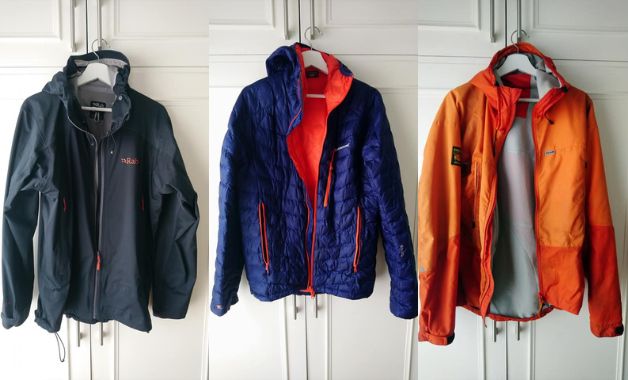What is a Softshell Jacket?

What is a softshell jacket?
The term has been around for a while now, and refers to those jackets that are not specifically ‘hardshell’, that is to say waterproof jackets that keep out the weather and may or may not have a degree of breathability.
The word ‘softshell’ covers a wide range of jacket types and that, in part, adds to the confusion over the distinction between soft and hardshells.
Let’s start by listing and explaining some of the properties that these jackets can offer.
Water resistance*
Repels water but will not keep it out for long periods of rain.
Waterproofness*
Will keep out rain for long periods but expect some water to enter through the neck, cuffs, zips and pockets.
Breathability
Allows sweat in the form of water vapour to exit through the jacket, this will have varying degrees of success depending on the amount the wearer perspires, the temperature difference between inside and outside the jacket, the humidity and the material used in the jacket construction.
Insulation
Depending on the insulating material used this will have different results. A thin layer of mesh inside a jacket will trap some air and offer a little insulation, a thickly insulated down or synthetic jacket sewn with baffles will offer a much greater level of insulation.
Windproofness
All hardshells will be windproof by their nature, but a fleece jacket for example will not be windproof. Many softshell jackets have a windproof material as their outer layer, for example Pertex.
A good hardshell jacket should be waterproof and therefore windproof.
They may also offer some degree of insulation with an inner layer, but many do not.
They may also claim to be ‘breathable’ by allowing moisture to escape but the effectiveness of this is limited by the factors mentioned above. Therefore in warm, humid conditions, or when you are working hard and perspiring heavily, you will begin to feel overly damp and uncomfortable inside your hardshell jacket.
This is where the softshell enters the scene.
The main feature of softshell jackets is that they will allow moisture to escape through the material, keeping you more comfortable as a result.
However, the payoff for this benefit is that they won’t be completely waterproof. Some will be water resistant, keep off a shower for example, but they won’t keep you dry if it rains all day, for this you will still need your hardshell.
Most softshells will also be windproof and some will offer insulation and these benefits will keep you comfortable and warm on a chilly and windy day.
Different manufacturers will make different claims about their jackets, some being suitable for cool summer days, some for showery autumnal weather and some for icy cold winter climbs.
Each type of softshell offering different degrees of water resistance, windproofing and insulation.
So, when you are confronted by the bewildering choice of jackets on the market remember that each is a combination of the above features.
You can choose your jacket on the basis of those attributes you need the most of.
Finally, always remember to carry your hardshell jacket in your pack in the event of heavy rain.
*Manufacturers will say the material of the jacket is waterproof but what is really important is the build quality of the jacket, the taped seams, waterproof zips and pockets, and proper fitting hoods.
Russ Mills is the owner and founder of Mountaintrails.ie, guided hiking and mountain training providers in Ireland and the UK.
